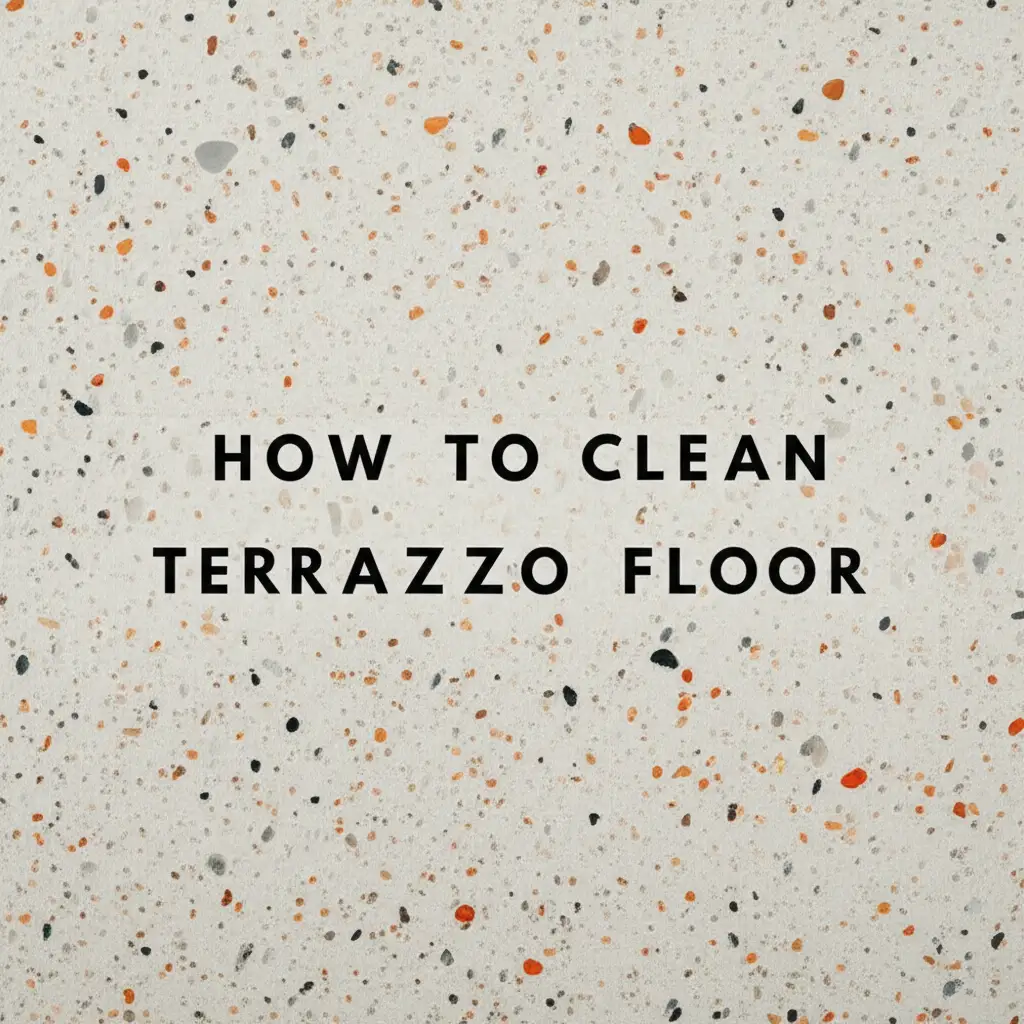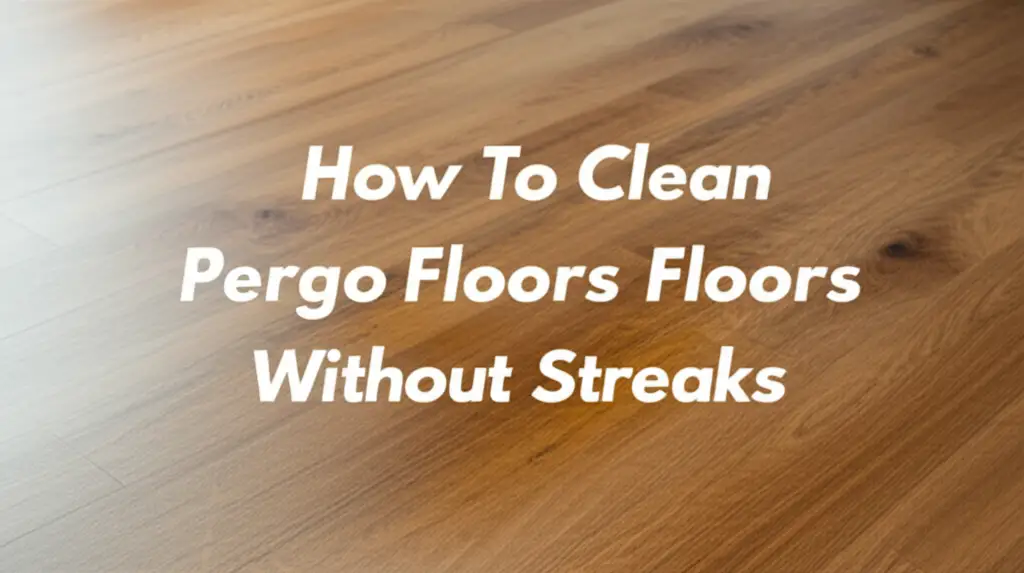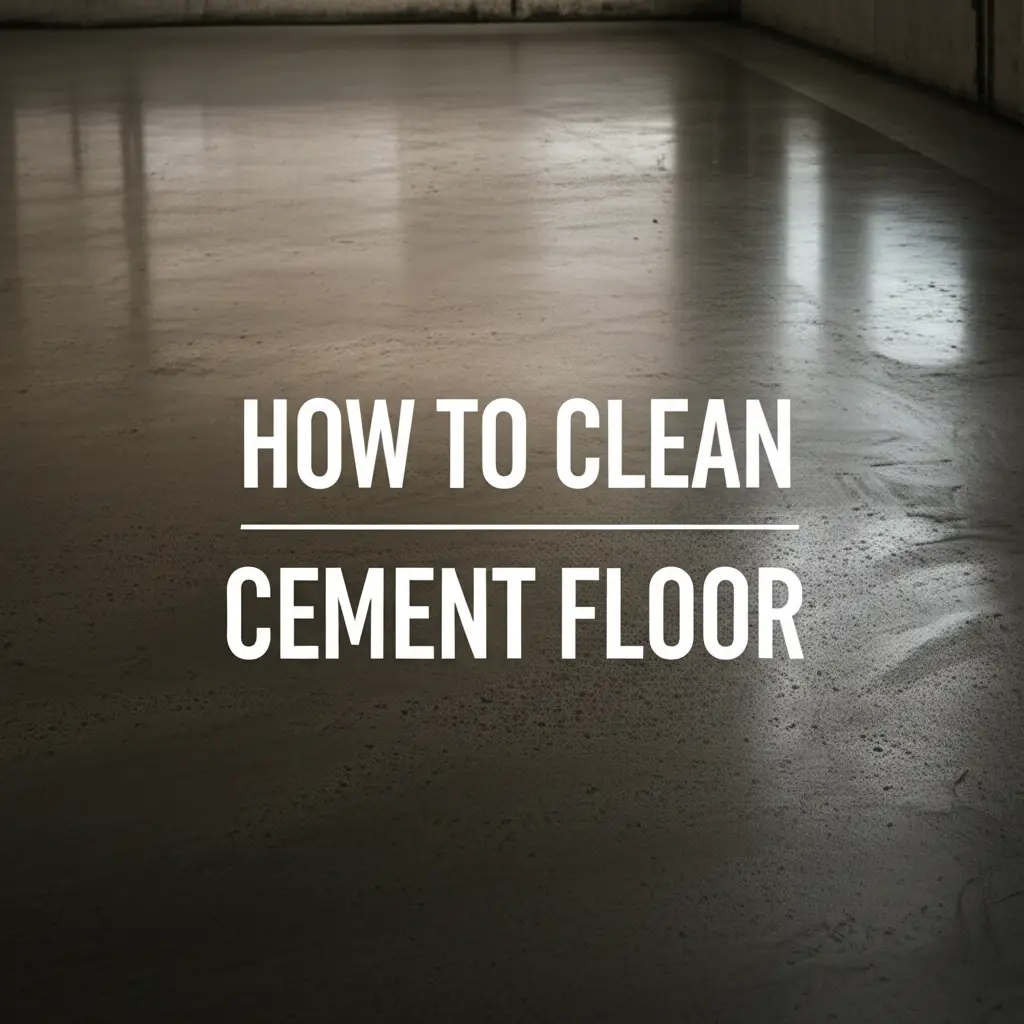· Floor Care · 11 min read
How To Clean Terrazzo Floor

Unlock the Shine: How To Clean Terrazzo Floor Effectively
Have you ever admired the unique beauty of a terrazzo floor? Its distinctive look comes from chips of marble, quartz, granite, or glass set in a binder. These floors are famous for their durability and elegant appearance. Learning how to clean terrazzo floor properly keeps its beauty for years. Many people think these floors are hard to maintain, but it is actually simple with the right steps.
I understand you want your terrazzo to always look its best. This guide will show you simple daily cleaning habits. We will also cover deeper cleaning methods and how to remove tough stains. You will learn about the best tools and cleaners to use. By the end, you will know exactly how to care for your terrazzo floor.
Takeaway
- Sweep or dust mop terrazzo floors daily to remove loose dirt.
- Always use pH-neutral cleaners specifically designed for stone or terrazzo.
- Blot liquid spills immediately to prevent staining.
- Avoid harsh, acidic, or abrasive cleaning products.
- Consider professional sealing to protect your terrazzo floor’s surface.
Clear and Concise Answer
To clean terrazzo floor, regularly sweep away debris and damp mop with a pH-neutral cleaner. Avoid acidic solutions and abrasive tools. Blot spills at once to prevent stains. For deeper cleaning, use a specialized terrazzo cleaner and a soft brush, then rinse well and dry. Regular sealing helps protect the surface.
Understanding Your Terrazzo Floor’s Composition
Before you clean terrazzo floor, you should understand what it is. Terrazzo is a composite material poured in place or precast. It contains chips of natural stone, glass, or other aggregates. These chips are set in a binder, usually cement or epoxy. The surface then gets ground and polished to a smooth finish. This unique mix gives terrazzo its distinct appearance.
Because terrazzo contains stone, it behaves like natural stone in many ways. It is porous to some degree, meaning it can absorb liquids if not sealed. The binder material also affects how it reacts to cleaners. Epoxy binders are generally less porous than cement binders. Understanding this helps you choose the right cleaning products. Incorrect cleaners can dull the shine or even etch the surface. This is why proper care is important for its longevity. Knowing your floor helps you clean it effectively.
The beauty of terrazzo lies in its diverse aggregate colors and patterns. Some floors have large marble chips, while others feature small glass pieces. This variety means each terrazzo floor is unique. Despite the variations, the basic cleaning principles remain the same. Gentle care protects both the aggregate and the binder. Treating your terrazzo floor with respect helps it maintain its original luster. My experience with these floors shows gentle methods work best.
Essential Tools and Cleaners for Terrazzo
To properly clean terrazzo floor, you need the right tools and products. Using the wrong items can damage the surface. Start with a soft bristle broom or a dust mop. These tools effectively pick up loose dirt without scratching the floor. For wet cleaning, a soft mop, like a microfiber or cotton mop, works best. Avoid abrasive scrubbers or steel wool pads. These can scratch the polished surface.
Choosing the correct cleaner is crucial for terrazzo. You must use a pH-neutral cleaner. Many general-purpose household cleaners are too acidic or too alkaline. Acids can etch the stone chips and dull the shine. Alkalines can strip sealants. Look for cleaners specifically labeled for natural stone, terrazzo, or pH-neutral. Many stone cleaning product lines offer suitable options. Some common brands make suitable pH-neutral floor cleaners.
- pH-neutral floor cleaner: Essential for daily and deep cleaning. It cleans without harming the surface.
- Soft bristle broom or dust mop: For daily dry sweeping.
- Microfiber or cotton mop: For damp mopping.
- Two buckets: One for cleaning solution, one for rinse water. This prevents spreading dirty water.
- Soft cloths or sponges: For spot cleaning or spills.
- Squeegee (optional): For quickly removing excess water after rinsing.
- Wet vacuum (optional): For larger areas to remove dirty water more efficiently.
Always read the cleaner’s label before use. Test any new cleaner in an inconspicuous area first. This small test ensures the product will not damage your floor. I always recommend this step for peace of mind.
Daily Cleaning Routine for Terrazzo Floors
A consistent daily routine helps maintain your terrazzo floor’s beauty. It also prevents dirt from scratching the surface. Small particles, like sand or grit, act like sandpaper underfoot. They can dull your floor’s shine over time. Starting with dry cleaning is key. Use a soft bristle broom or a dust mop. Sweep the entire floor to remove loose dirt, dust, and debris. Pay attention to high-traffic areas.
After dry sweeping, follow with a damp mop. Mix your pH-neutral cleaner with warm water according to the product directions. Never use too much cleaner. Too much soap leaves a residue, making your floor look dull. Dip your soft mop into the cleaning solution. Wring out the mop well. The mop should be damp, not dripping wet. Excess water can penetrate unsealed or poorly sealed areas.
Mop the floor in small sections. Rinse your mop frequently in a second bucket of clean water. This step ensures you are picking up dirt, not just spreading it around. After mopping, let the floor air dry completely. Or, you can use a clean, dry mop to absorb excess moisture. This routine is simple but very effective. It keeps your terrazzo looking fresh every day. You will notice a big difference with this consistent care.
Deep Cleaning Your Terrazzo Floor
Sometimes, your terrazzo floor needs more than daily cleaning. Deep cleaning removes embedded dirt and restores shine. Plan to deep clean your terrazzo floor every few months. This depends on how much traffic your floor gets. Start by dry sweeping or vacuuming the entire floor. Remove all loose debris. This prepares the surface for wet cleaning.
Prepare your cleaning solution using a pH-neutral cleaner. Mix it with warm water in a bucket. For deep cleaning, you might use a slightly stronger concentration if the product allows. Never use harsh chemicals or strong acids. Acids can etch the surface of the terrazzo. This can cause permanent damage. If you need to clean stubborn dirt on a stone floor, using appropriate products is essential. How To Clean Stone Floor provides more insights on caring for similar materials.
Apply the cleaning solution to a small section of the floor. Let it sit for a few minutes. Do not let it dry. Use a soft bristle brush or a floor machine with a soft pad to gently scrub the surface. Do not use abrasive pads. Abrasive pads will scratch the terrazzo. Scrub in a circular motion to loosen dirt. After scrubbing, use a wet vacuum or clean mop to remove the dirty water. Rinse the area thoroughly with clean water. Repeat the rinsing process until no soap residue remains. Thorough rinsing prevents dulling films. Allow the floor to air dry completely or dry it with a clean, dry mop. This process helps your terrazzo floor shine again.
Tackling Common Terrazzo Floor Stains
Even with regular cleaning, stains can happen on your terrazzo floor. Acting quickly is key when spills occur. Blot liquid spills immediately with a clean cloth. Do not wipe or rub the spill, as this can spread the stain. For tougher stains, you need specific methods. Terrazzo is a composite, so different stains require different approaches.
- Food and Beverage Stains (e.g., coffee, wine, juice):
- Mix a poultice using hydrogen peroxide and a white absorbent material like paper towels or cotton balls.
- Place the poultice directly on the stain. Cover it with plastic wrap and tape the edges.
- Allow it to sit for several hours or overnight. The poultice draws the stain out.
- Remove the poultice and rinse the area with clean water. Repeat if the stain persists.
- Grease, Oil, or Fat Stains:
- Sprinkle an absorbent powder like cornstarch or talcum powder directly on the stain.
- Let it sit for several hours to absorb the oil.
- Brush away the powder. If the stain remains, make a poultice with mineral spirits or acetone and an absorbent material.
- Apply as described above. Rinse well afterward. For greasy build-up in a kitchen, specialized methods might apply. How To Clean Greasy Floor offers additional tips.
- Ink Stains:
- Dab the stain with a cotton ball soaked in rubbing alcohol or acetone.
- Blot, do not rub. Rinse the area thoroughly with water.
- Paint Stains:
- If the paint is fresh, wipe it immediately with a damp cloth.
- For dried paint, carefully scrape it with a plastic scraper. Avoid metal tools.
- If needed, use a small amount of paint stripper made for stone surfaces. Test it first in an hidden spot. Using strong products needs care. How To Clean Paint Off Floor discusses similar challenges.
Always rinse the area thoroughly after treating a stain. Use clean water to remove any residue from the cleaning agents. Dry the floor completely. This prevents water spots or cleaner residue from attracting more dirt. Treating stains quickly saves your floor.
Protecting and Sealing Your Terrazzo Floor
Sealing is a crucial step in maintaining your terrazzo floor. Terrazzo, especially cement-based terrazzo, is somewhat porous. This means it can absorb liquids, leading to stains. A good quality sealer acts as a barrier. It fills the tiny pores in the surface. This makes the floor more resistant to spills and etching. Sealing also makes future cleaning much easier. The dirt sits on the surface, not in the pores.
The frequency of sealing depends on floor traffic and sealer type. Generally, terrazzo floors should be sealed every 1-3 years. High-traffic areas might need sealing more often. Choose a penetrating sealer specifically designed for natural stone or terrazzo. These sealers soak into the material. They do not leave a film on the surface. Topical sealers can cause a build-up. This build-up may require specific cleaning or stripping. Sometimes, old wax or sealants need removal before applying new ones. For those specific situations, resources on How To Clean Wax Off Floor can be helpful.
To apply a sealer:
- Clean the floor thoroughly: The floor must be perfectly clean and dry before sealing. Any dirt or residue will get sealed in.
- Apply the sealer: Follow the manufacturer’s instructions. Use a clean applicator pad or mop. Apply a thin, even coat.
- Allow penetration: Let the sealer sit for the recommended time. It needs to soak into the pores.
- Wipe off excess: Do not let the sealer dry on the surface. Wipe off any excess with a clean, dry cloth. This prevents streaks or haze.
- Cure time: Allow the sealer to cure completely. This might take 24-72 hours. Avoid heavy traffic or spills during this time.
Sealing protects your investment. It keeps your terrazzo floor looking beautiful and new for a long time. It is a simple step with big benefits.
What to Avoid When Cleaning Terrazzo
Knowing what to avoid is just as important as knowing what to do. Many common cleaning products or methods can harm your terrazzo floor. Using the wrong items can etch the surface, dull the shine, or even strip the protective sealer. My advice is simple: when in doubt, be gentle.
- Acidic Cleaners: Never use acidic cleaners on terrazzo. This includes vinegar, lemon juice, or cleaners containing harsh acids. Terrazzo often contains marble or other calcareous stones. Acids react with these stones. This reaction causes etching, which looks like dull spots or permanent damage. Even some common bathroom cleaners are highly acidic. Be careful with those.
- Abrasive Cleaners or Tools: Avoid scouring powders, abrasive pads, or steel wool. These products scratch the polished surface of your terrazzo. Scratches make the floor look dull and can trap dirt. Stick to soft cloths and mops.
- Strong Alkaline Cleaners: Some strong alkaline (high pH) cleaners can also damage terrazzo. They can strip sealants and make the surface look dull. Always choose pH-neutral cleaners.
- Ammonia-Based Cleaners: Ammonia can break down some sealers and also cause dulling over time. It is best to avoid them for regular cleaning.
- Wax-Based Cleaners or Finishes: Unless specifically designed for terrazzo, avoid wax-based products. They can build up over time. This build-up makes the floor slippery and difficult to clean. It also creates a yellow film.
Always read product labels carefully. If a product does not specify it is safe for natural stone or terrazzo, do not use it. Simple, gentle, pH-neutral cleaning is always the best path. Protecting your terrazzo from harmful chemicals ensures its long-term beauty.
Conclusion
Cleaning your terrazzo floor does not have to be difficult. With the right tools and a little knowledge, you can keep your floor looking beautiful for years. Remember, consistency is key. Daily dry sweeping and regular damp mopping with a pH-neutral cleaner will prevent most issues. Promptly addressing spills avoids stubborn stains.
Understanding that terrazzo is a stone composite guides your cleaning choices. Avoid harsh acids and abrasive materials at all costs. These can cause irreversible damage. Instead, embrace gentle, pH-neutral solutions. Lastly, do not forget the importance of sealing. Sealing provides a protective barrier, making your cleaning efforts more effective. It also extends the life of your floor.
Your terrazzo floor is a unique and durable surface. It deserves proper care. By following these simple steps, you will enjoy its elegance and shine for a lifetime. Start your routine today and see the difference. You now have all the information you need on how to clean terrazzo floor like a pro.
- terrazzo cleaning
- floor maintenance
- stone floor care
- home cleaning tips
- floor care guide




